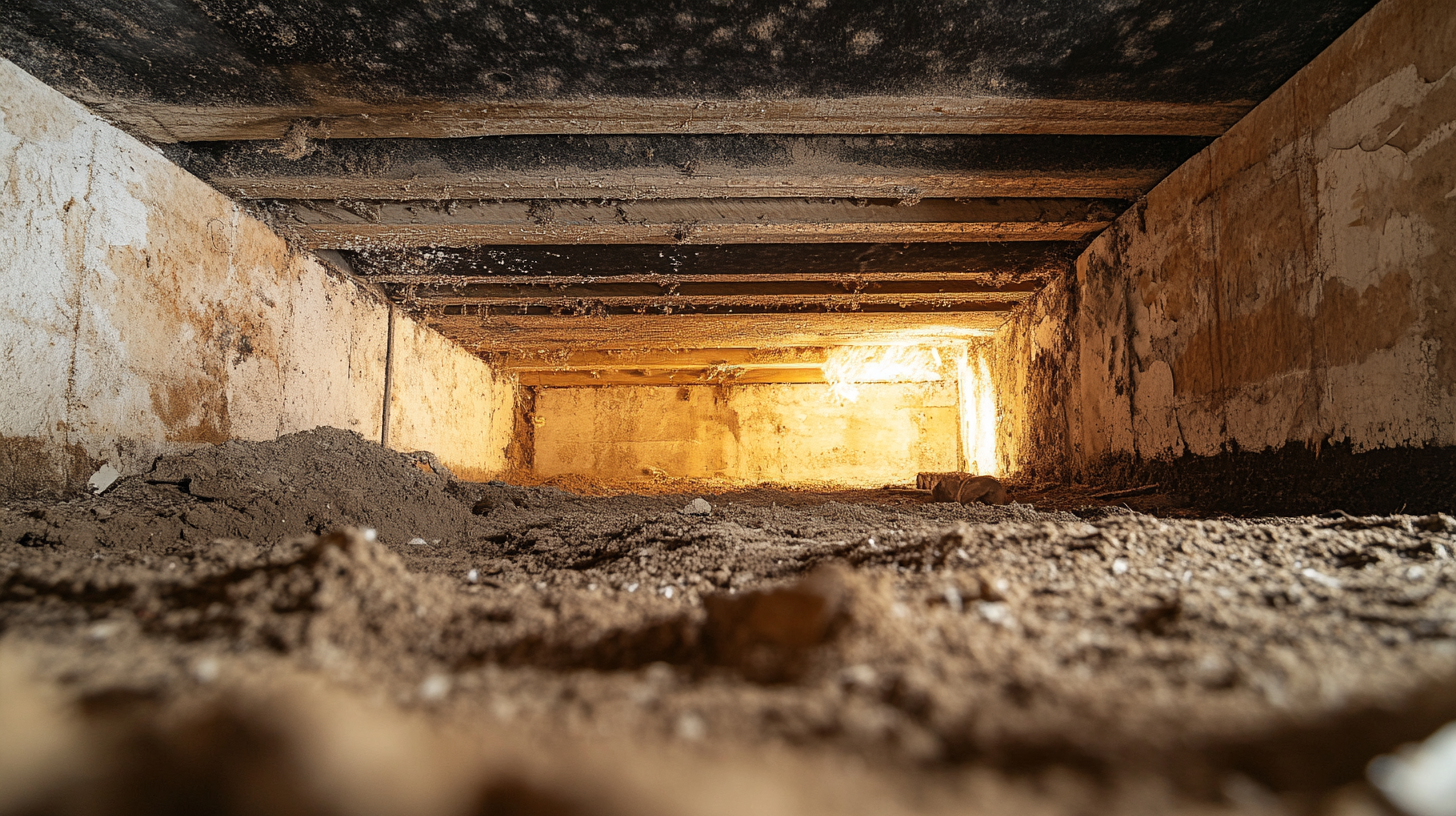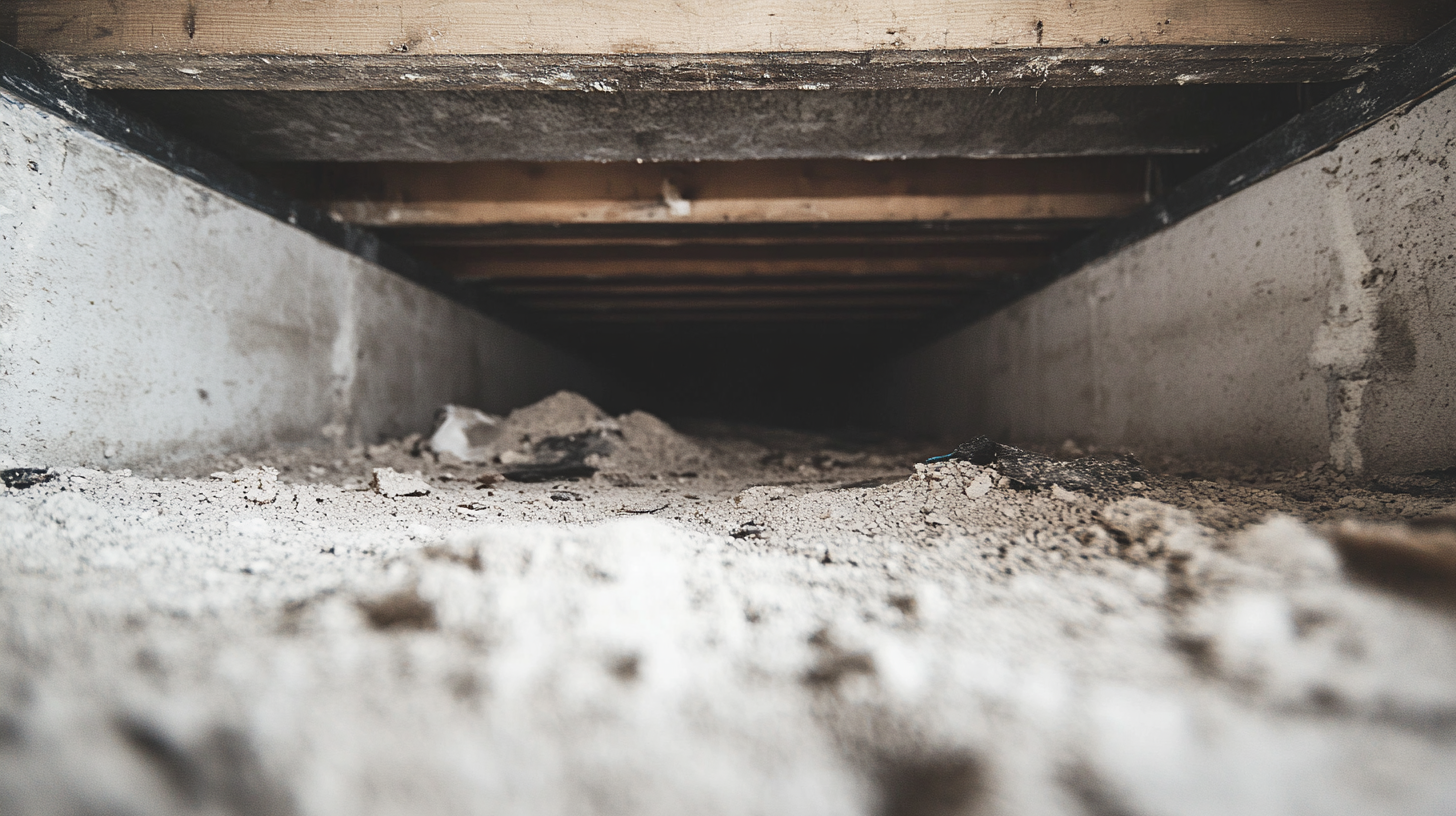Soot Removal Myths Debunked: What Really Works

Soot can be a persistent and troublesome presence in any home or building, stemming from common sources like candles, fireplaces, and even stoves. While it's known for its stubborn stains and potential health risks, there are numerous misconceptions about the best practices for effectively removing soot. This often leads to ineffective cleaning strategies that can exacerbate the problem rather than resolve it. In this blog, we'll clear the smoke on soot removal by addressing the most prevalent myths and providing you with scientifically-backed methods to ensure your cleaning efforts are thorough, safe, and efficient. Join us as we explore the truth behind soot removal and arm you with the knowledge needed to maintain a cleaner, healthier environment.
Common Myths About Soot Removal
Soot removal can be a challenging task, and misconceptions about the best practices for cleaning it up can lead to ineffective or even damaging results. Below, we debunk three common myths to help you approach soot removal more effectively.
Myth 1: Water and Soap Are Always Effective
Many believe that a simple solution of water and soap is a catch-all for soot removal. However, this method is not always effective and can sometimes even worsen soot stains. Soot is an oily substance; thus, using water can cause the soot to spread and penetrate deeper into porous surfaces like drywall or fabric, creating stains that are much harder to remove. Instead, specific techniques such as dry sponging or using a vacuum can be employed to lift the soot particles before any water-based cleaning is attempted. This approach prevents the soot from embedding further into the surface.
Myth 2: All Soot Types Are the Same
Contrary to common belief, not all soot is created equal. Soot can vary significantly depending on its source—whether it's from burning candles, wood, oil, or plastic—and each type can require a different cleaning strategy. For instance, soot from oil fires is denser and stickier, necessitating a more robust cleaning agent than soot from wood fires, which can often be removed with milder cleaning solutions. Recognizing the type of soot you are dealing with is crucial in selecting the correct method to effectively and safely clean the affected surfaces.
Myth 3: Stronger Chemicals Provide Better Results
It's a common misconception that the stronger the chemical used, the better the results for soot removal. This is not only misleading but can also be dangerous. Harsh chemicals can cause permanent damage to materials like paint, fabric, and metal, and can be hazardous to your health without proper ventilation and protective gear. Instead, it's recommended to start with the mildest cleaning solutions suggested for the type of soot you are dealing with and only escalate to stronger solutions if absolutely necessary. This conservative approach helps preserve surfaces while still effectively removing soot.
What Really Works in Soot Removal
Removing soot effectively requires understanding the nature of the soot and the surfaces it affects. This section explores tried and true techniques and the best practices for choosing cleaning agents that are both safe and effective, ensuring you tackle the problem without causing further damage.
Effective Soot Removal Techniques
Effective soot removal begins with the right approach. Here’s an overview of proven methods that professionals use to clean soot safely and efficiently:
- Dry Sponging: Dry cleaning soot from walls and ceilings should always be the first step. Using a chemically inert, dry sponge, gently wipe the soot from the surface. This method prevents the soot from embedding deeper into surfaces when liquid cleaners are applied.
- Vacuuming: A high-efficiency particulate air (HEPA) vacuum can be used to remove loose soot particles from surfaces before any wet cleaning begins. The vacuum's nozzle should be held slightly away from the surface to avoid pushing soot deeper into porous materials.
- Thermal Fogging: For severe cases, particularly after a fire, thermal fogging can help penetrate deep into surfaces and neutralize the odors that soot leaves behind. This technique should be handled by professionals as it involves heating a deodorizing product that binds to soot particles to neutralize them.
- Steam Cleaning: Steam cleaning can be effective for soot removal from carpets and upholstery. The steam helps to loosen the soot from the fibers, making it easier to wipe away or vacuum.
Choosing the Right Cleaning Agents
Selecting the correct cleaning agents is critical to successfully removing soot without damaging the surface. Here are some guidelines for choosing appropriate cleaning solutions based on the type of soot and the surface affected:
- Type of Soot: Oil-based soot, commonly from burnt plastics or rubbers, will require a degreasing agent to effectively dissolve the soot. Conversely, soot from wood or paper is often less greasy and can be treated with less aggressive cleaners.
- Surface Sensitivity: Delicate surfaces such as wallpaper or antique finishes require mild, non-abrasive cleaners to prevent damage. In contrast, hardier surfaces like metal or ceramic can tolerate stronger solutions.
- pH-Neutral Cleaners: For most indoor surfaces, pH-neutral cleaners are preferred as they are less likely to cause damage or leave residues that attract further soiling.
- Natural Solutions: For those preferring environmentally friendly options, vinegar or rubbing alcohol can be effective for lighter soot stains. Always test any cleaner on a small, inconspicuous area of the surface first to ensure it does not cause discoloration or damage.
Special Considerations in Soot Removal
Removing soot effectively not only requires the right techniques and cleaning agents but also special consideration for the type of surface affected and the stubbornness of the stains. This section provides guidance on how to address soot removal from delicate surfaces and tackle particularly challenging stains without causing damage.
Soot Removal from Delicate Surfaces
Delicate surfaces such as fine fabrics, wallpaper, and untreated wood require gentle handling to avoid further damage while cleaning soot. Here are tips for cleaning soot from sensitive materials:
- Use a Dry Cleaning Sponge: Before applying any liquid solutions, use a dry cleaning sponge to remove as much soot as possible. These sponges are specifically designed to absorb soot without pushing it deeper into the material.
- Blotting Technique: If a cleaning solution is necessary, apply it sparingly and blot the area with a clean white cloth instead of scrubbing. Blotting helps lift the soot out without spreading it around.
- Gentle Cleaners: Opt for gentle cleaners that are free from harsh chemicals. For example, a mild dish soap diluted in water can be effective for fabrics, while a dedicated wood cleaner is suitable for untreated wood surfaces.
- Professional Cleaning: For antiques or expensive items, consider professional cleaning services. Professionals have the tools and expertise to clean without causing damage.
Handling Stubborn Soot Stains
Stubborn soot stains that resist initial cleaning attempts can be frustrating and may require more intensive strategies. Here are techniques for dealing with challenging soot stains:
- Increase Cleaning Strength Gradually: Start with the mildest cleaning solution and gradually move to stronger agents if the stain persists. This approach minimizes potential damage to the surface.
- Heat Application: Applying heat can sometimes help loosen the grip of soot particles. Using a steam cleaner on heat-resistant surfaces can penetrate deeper and help lift stubborn stains.
- Chemical Sponges: Chemical sponges, designed specifically for soot and smoke residue, can be used without any cleaning solution to dry-clean the surface. These are particularly effective on painted walls and ceilings.
- Alcohol-Based Cleaners: For extremely stubborn stains, especially on hard surfaces, alcohol-based cleaners can be effective. Ensure the surface is compatible with alcohol to avoid damage.
- Professional Assessment: When dealing with high-value or large surface areas, a professional assessment may be warranted. Experts can provide a more thorough cleaning regimen that safely and effectively removes persistent soot stains.
The Role of Professional Soot Removal Services
While many minor soot removal tasks can be handled with DIY methods, certain situations require the expertise and equipment of professional cleaning services. Understanding when to call in professionals and recognizing the benefits they offer can ensure that soot removal is handled efficiently and effectively, minimizing damage and health risks.
When to Call in the Professionals
Professional soot removal services are particularly crucial under certain circumstances. Identifying when to call in the experts can save both time and money, and protect your property from further damage. Here are key situations where professional help is necessary:
- Extensive Damage: If a large area is affected by soot, such as in the aftermath of a fire, professional services are essential. They have the capacity to handle large-scale cleanups quickly and efficiently.
- Health Risk Situations: Soot can contain harmful chemicals and carcinogens. If the soot is the result of a chemical fire or includes hazardous materials, professional cleaners equipped with the right safety gear should be employed to mitigate health risks.
- Hard-to-Reach Areas: Professionals have the necessary tools to effectively clean soot from ductwork, high ceilings, and other hard-to-reach areas, ensuring a thorough cleanup.
- Valuable Property: When soot affects antiques, artwork, or delicate electronics, professionals can employ specialized cleaning techniques that prevent damage while restoring items.
- Persistent Odors: If soot odors persist despite initial cleaning attempts, professionals can use advanced techniques like thermal fogging and ozone treatment to neutralize odors completely.
Benefits of Professional Cleaning
Opting for professional soot removal services offers several advantages. Here are some of the primary benefits of using expert services for soot removal:
- Thoroughness: Professionals are trained to conduct a comprehensive assessment and tackle all affected areas, ensuring no residual soot or odor remains.
- Speed: Due to their experience and the advanced equipment they use, professionals can complete the cleaning process much more quickly than typical DIY methods.
- Safety: Professional soot removal companies are equipped with the necessary personal protective equipment (PPE) and follow industry-standard safety protocols to prevent health risks associated with soot exposure.
- Prevention of Further Damage: Experts understand the chemical properties of soot and the best methods for removing it from various surfaces without causing damage. Their approach helps prevent the soot from embedding further into materials, saving homeowners from potentially costly repairs or replacements.
- Stress Reduction: Handling the aftermath of a soot-related incident can be stressful. Employing professionals alleviates the burden of cleanup, allowing you to focus on other important recovery steps.
- Insurance Compliance: Often, insurance companies require professional remediation reports to validate claims related to fire and soot damage. Professional cleaners can provide the necessary documentation to support your claims.
Preventive Measures to Reduce Soot Accumulation
Taking proactive steps to minimize soot production and maintaining regular cleaning schedules are crucial in preventing excessive soot accumulation, which can pose health risks and lead to property damage. This section offers practical tips and guidelines for effectively reducing and managing soot in homes and businesses.
Minimizing Soot Production
Reducing soot production not only improves indoor air quality but also decreases the frequency and intensity of cleaning required. Here are effective strategies to minimize soot production:
- Proper Ventilation: Ensure adequate ventilation in areas prone to soot, such as kitchens, fireplaces, and areas with heating appliances. Good airflow helps to dissipate potential soot particles and prevents them from settling on surfaces.
- Regular Maintenance of Heating Systems: Regularly service heating systems, chimneys, and stoves to ensure they are burning fuel efficiently. Poorly maintained heaters can produce excessive soot due to incomplete combustion of fuel.
- Use of Soot Reducers: Introduce soot reducers into fireplaces and stoves. These products help to break down soot particles before they escape into the air and settle on surfaces.
- Choosing Cleaner Fuels: Opt for cleaner fuels for fireplaces, stoves, and heaters. For example, burning dry, seasoned wood produces less soot compared to damp or green wood. Similarly, using high-quality fuels for oil burners can reduce soot production.
- Adjusting Flame Settings: In gas-fired appliances, adjust the flame settings to ensure a more complete combustion, which significantly reduces soot output. A blue flame indicates more complete combustion than a yellow or orange flame.
Regular Cleaning and Maintenance
Regular cleaning and maintenance are essential to prevent soot from accumulating and embedding in surfaces, making it harder to clean over time. Here are guidelines to establish effective routines:
- Frequent Dusting and Vacuuming: Regularly dust and vacuum areas prone to soot accumulation, such as near fireplaces, stoves, and vents. Use a vacuum with a HEPA filter to efficiently capture fine soot particles.
- Professional Duct Cleaning: Schedule professional duct cleaning services periodically, especially if you use HVAC systems extensively. This helps remove soot that accumulates within ducts and prevents it from circulating through your home or business.
- Clean Appliances Regularly: Clean the interior of ovens, stoves, and fireplaces regularly to remove any soot buildup. This not only prevents further soot spread but also enhances the efficiency of these appliances.
- Periodic Checks and Repairs: Inspect and repair any leaks or malfunctions in fuel-burning appliances promptly. Leaks can lead to incomplete combustion, increasing soot production.
- Educating Inhabitants and Employees: Educate family members or employees about the importance of minimizing soot production, such as adjusting the flame on gas stoves or properly extinguishing candles.
FAQs
Contact Fast Response Cleaning & Restoration Today!
Fast Response Cleaning & Restoration will do everything we can to ensure your experience with us is excellent.
Request A FREE Estimate
Request A FREE Estimate Form
CHECKOUT RECENT POST



Have an Emergency? We're Here to Help!
When it comes to disaster cleanup, we are a seasoned veteran in the industry and have helped hundreds of property owners just like you.
Our disaster recovery teams are available 24-7 to quickly clean up and repair disasters of all types.
